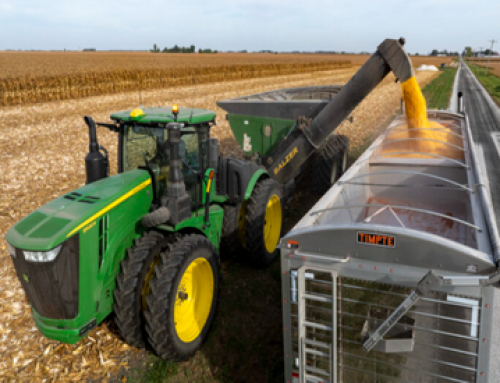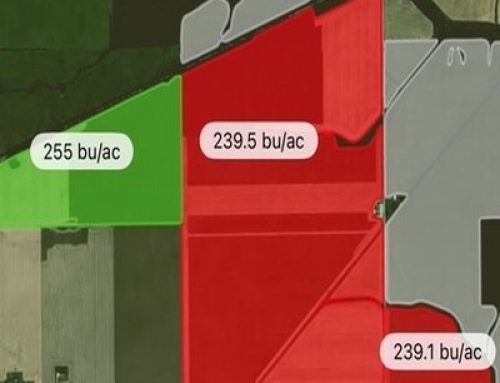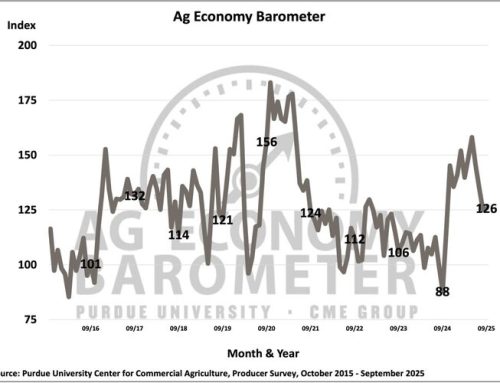By Joana Colussi, Nick Paulson, and Joe Janzen, Department of Agricultural and Consumer Economics, University of Illinois and Carl Zulauf, Department of Agricultural, Environmental and Development Economics, Ohio State University
The historical supremacy of the United States in corn exports is shrinking because of heightened competition in the global market. Brazil is gaining ground, filling gaps in the global corn supply caused by the war in Ukraine, a major corn exporter, and trade tensions between the United States and China. The South American country has enhanced its capacity to compete in export markets by increasing production, improving grain transportation logistics, and boosting trade relations with major importers – most recently reaching an agreement with China on phytosanitary requirements for corn trade. The United States and Brazil account for almost 60% of world corn exports, followed by Argentina and Ukraine, which account for another 30% of international trade in corn. This article examines the last 20 years of Brazilian and American corn exports and provides perspective on acreage and supply in the current crop season in Brazil and the coming 2024 crop season in the United States.
Transition of Global Corn Leadership
The United States used to be the world’s largest corn exporter. In the mid-2000s, the United States accounted for about 60% of global corn exports, and Brazil averaged about 6%. In calendar year 2023 (January-December), Brazil reached almost 30% of the global market and surpassed the United States in corn shipments, reaching 2,200 million bushels, according to the Brazil Foreign Trade Secretariat (Secex). In the same period, the U.S. exported 1,797 million bushels, according to the U.S. Department of Agriculture (USDA). Two short-term factors explain why Brazil surpassed the United States in 2023: a new corn-trade agreement between Brazil and China and Brazil’s bumper second corn crop, making Brazil’s supplies highly competitive globally. Brazilian corn exports have exceeded or matched those of the U.S. just two other times – in 2013 following the drought year of 2012, and in 2019 during the US-China trade war (see Figure 1).
In the last two decades, Brazilian corn exports have increased elevenfold, from 198 million bushels in 2004 to 2,200 million bushels in 2023 (see Figure 1). In contrast, U.S. corn exports have not exhibited significant growth, averaging 1,967 million bushels since 2004. The Brazilian increase occurred mainly in the last 10 years, coinciding with Brazil’s significant increase in second-crop corn (called safrinha), planted in January-February and harvested in June-August each year. Currently, the second crop corn accounts for about 75% of total corn production in Brazil. The growth in the safrinha in the Center-West and Northeast states is an opportunity for Brazil to double its corn production in the coming years (see farmdoc daily, April 12, 2021).
Especially in the last ten years, investments in Brazil have significantly improved logistics associated with agricultural commodities. Corn exports through Brazil’s northern ports, utilizing the Amazon River basin’s waterways, have increased in share compared to the volumes shipped through the historically important port of Santos in São Paulo state, in the Southeast. This transition underscores Brazil’s progress in addressing infrastructure challenges that have hindered the efficient distribution of its growing harvests to international markets.
Since November 2022, a new agreement has enabled corn trade between Brazil and China. The two countries had already signed a protocol of phytosanitary requirements for corn exports in 2014 that, in theory, would open Brazilian corns to China. But little trade happened due to complex inspection requirements, quarantines, certificates and permits. In 2022, China relaxed most of the requirements. As a result, China has become the main destination for Brazilian corn. In 2023, China imported 635 million bushels of corn from Brazil, equivalent to one-third of the total exported by the country. Brazil’s corn accounted for nearly 85% of Chinese imports between September and December 2023, according to Chinese customs data.
Increased shipments of Brazilian corn to China have reduced supplies available to other buyers. In turn, it has presented new opportunities for U.S. exporters to supply markets previously served by Brazil and enabled the U.S. to further support record demand in Mexico, which has been a top buyer of U.S. corn for many years. Consumer demand for livestock products continues to support feed demand in Mexico (USDA, 2024), although an ongoing dispute over Mexico’s decision to ban some biotech corn imports risks future disruption to U.S. shipments.
To read entire article, Click Here





